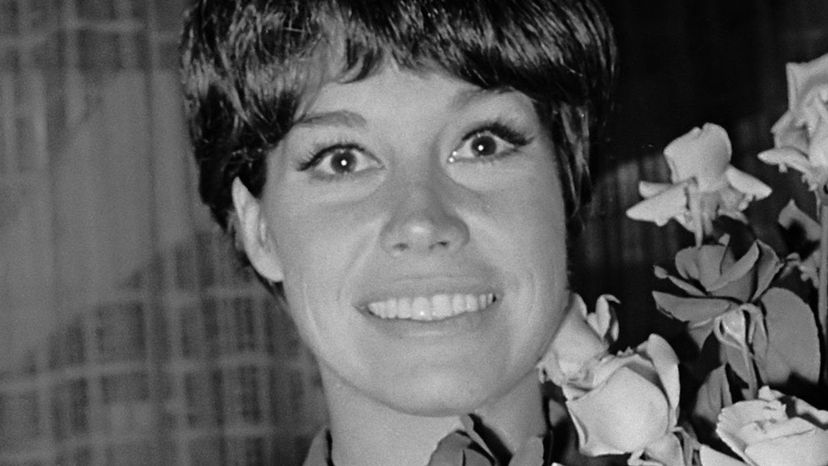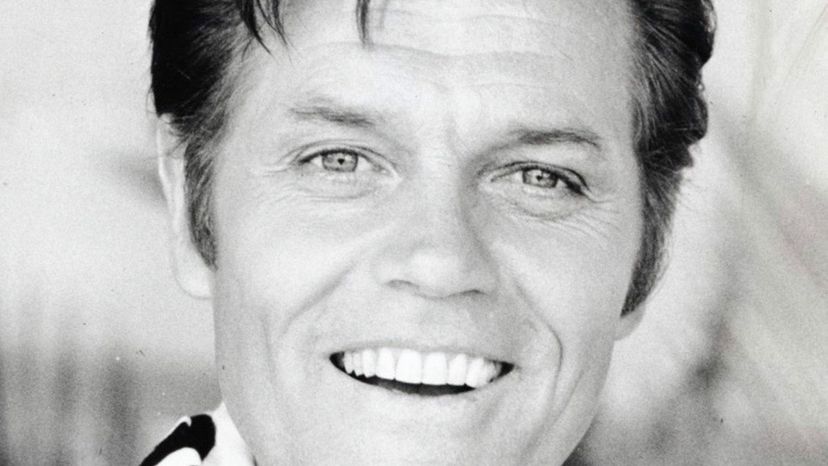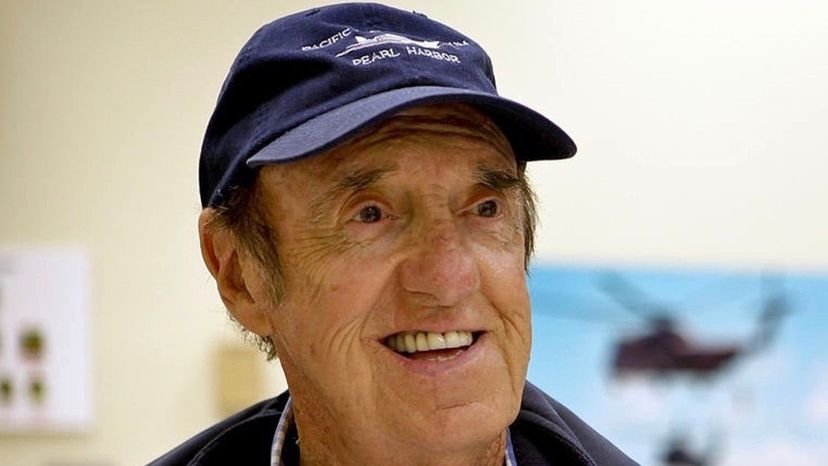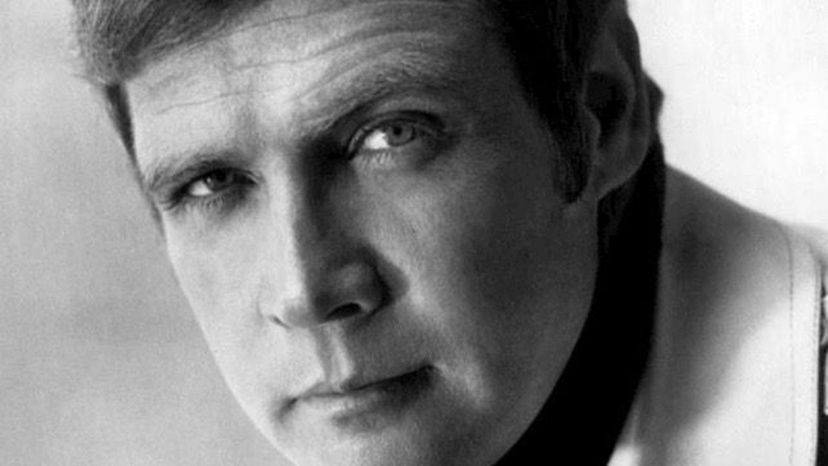
About This Quiz
The 1960s and 1970s were some of the most colorful and pivotal years for American television programming.Â
Continuing the experimentations and successes of the Golden Age of Television during the 1950s, the '60s and '70s saw a very definitive bunch of television shows whose story structures and narrative patterns are still being utilized today, attesting to the success and integrity of these TV styles first invented back then. From intriguing sitcoms to the development of the police procedural shows, these two decades were really imbibing the experimental mode of these eras and reflecting them back on television, creating an American pop culture that was also influencing the global pop culture, slowly but surely.
If the '50s saw the birth of the melodramatic genre and the proliferation of the western TV series, the '60s and '70s gave us a very eclectic collection of TV shows that are still inspiring today's TV programmers and creators. They're also becoming films to boot, so that says a lot about the popularity of such TV shows.
So can you name some of these pivotal and popular TV series if we tell you who starred in them? Take a look and see!

"The Mary Tyler Moore Show" aired from 1970 to 1977, during the time that second wave feminism was gaining ground - emphasizing the role of women outside the traditional reproductive role of a mother/wife. Her character, Mary Richards, embodied the second wave feminist ideal of the strong-willed independent professional woman who didn't need to rely on a man to survive.

Everybody in the ‘70s knew the opening theme song of "The Brady Bunch," which identified the characters of the sitcom about this blended family. The show aired from 1969 to 1974, and still reflected the popular family-oriented suburban sitcoms popular in previous decades.

"Happy Days" was a show that ran from 1974 to 1984, but its story is set during the 1950s and 1960s. A creation by Garry Marshall, future director Ron Howard also starred here as a teenager.
Advertisement

Gary Coleman was the adorable kid named Arnold, the one who grew up in Harlem with his brother Willis, and got adopted later on by a rich white man named Mr. Drummond in the TV series, "Diff'rent Strokes." The very popular show aired from 1978 until 1986, but its young stars sadly had troubled lives when they grew into adulthood.

"Hawaii Five-O" successfully ran from 1968 to 1980, with that unmistakable opening theme music composed by Morton Stevens. In 2010, the show was rebooted for a modern audience, and still runs despite encountering cast changes due to payment disputes.

Elizabeth Montgomery played the suburban housewife role with a twist - she's a witch, in the show, "Bewitched." The very popular show ran from 1964 to 1972, and a film version was later made in 2005 starring Nicole Kidman in the lead.
Advertisement

"The Man from U.N.C.L.E." made Robert Vaughn and David McCallum household names while it aired from 1964 to 1968. The show jumpstarted the espionage type of narratives in TV shows during the 1960s that spilled over in the decades to come.

Before reality TV had "Survivor" and fiction TV had "Lost," comedy TV had "Gilligan's Island," about a shipwrecked group of strangers stuck on an island. The TV series ran successfully from 1964 to 1967, making Bob Denver a cultural icon as the bumbling character, Gilligan.

"Mission: Impossible" became popular as a TV series when it aired in 1966. It ended in 1973. It got another TV reboot in the ‘80s where Peter Graves still retained his Jim Phelps character but was canceled after only two seasons. It now enjoys a film revival through Tom Cruise's Ethan Hunt-led efforts.
Advertisement

Archie Bunker is perhaps one of the most recognizable characters to come out of American TV, as played by Carroll O'Connor in "All in the Family." The TV series ran from 1971 to 1979, and while a sitcom, the show tackled many controversial social issues of that time, including racism, homosexuality, abortion, and many others.

Aside from "Bewitched," "I Dream of Jeannie" also featured a magical female in the lead, this time essaying the role of a centuries-old genie who falls in love with a mortal astronaut. This show ran from 1965 to 1970, and Larry Hagman co-starred with Barbara Eden in the lead.

Chief surgeon Hawkeye Pierce led the team in "M*A*S*H," a successful TV series that aired from 1972 to 1983. This show focused on doctors, and was set during the Korean War, where the doctors were stationed as army medics.
Advertisement

The 1960s saw many kinds of genres and themes entering the American television landscape, and military-set shows were some of the most popular ones, such as "Gomer Pyle U.S.M.C." This one focused on the life of a newbie solider named Gomer, whose antics made for comedy gold during that time, and had a successful run from 1964 to 1969.

Based on a popular comics, "The Addams Family" became a popular TV series as well, running from 1964 to 1966. That unmistakable opening theme song was carried over when a film series was made in the ‘90s, with Raul Julia and Anjelica Huston portraying Gomez and Morticia Addams.

"CHiPs" is spelled that way because it featured the job of the main protagonists of the show - as police officers belonging to the California Highway Patrol group. Larry Wilcox co-starred as Erik Estrada's cop buddy, and the show had a good run from 1977 until 1983.
Advertisement

The "fish out of water†and "stranger in a strange land†narratives get meshed and clashed in the sitcom called "The Beverly Hillbillies," about a family that emigrates from the Ozarks region to California. The comedy ran from 1962 until 1971, and later became a film in 1993 starring Jim Varney in Buddy Ebsen's TV role.

"The Munsters" is about a family that's made up of, well, monsters, headed by the Frankenstein-like Herman Munster played by Fred Gwynne. The show ran from 1964 to 1966, and even got nominated at the Golden Globe Awards in 1965 in the Best Television Series category.

"Welcome Back, Kotter" is the high school-set TV sitcom that aired from 1975 until 1979, featuring Gabe Kaplan in the lead as the teacher. A young John Travolta also co-starred as one of his students in the remedial class that clearly predates "The Breakfast Club" type of character casting.
Advertisement

"The Jeffersons" enjoyed a good run on American TV, airing from 1975 until 1985, with Sherman Hemsley featured there from start to finish. The show is notable for being a long-running sitcom that featured African-American actors in major roles, since this feat is still not very common in the American TV landscape.

"My Favorite Martian" starred Ray Walston as the Martian visitor while future TV Bruce Banner Bill Bixby co-starred. The show ran from 1963 until 1966, and had a film version in 1999 with Christopher Lloyd in the lead.

The 1970s show called "The Bob Newhart Show" continued the practice of earlier shows, mostly sitcoms, that featured the real name of the actor portraying a fictional character in the show. In this program, Newhart portrays Dr. Robert Hartley, a psychologist whose professional and personal situations are sometimes featured as comedic.
Advertisement

Sci-fi as a TV genre was also big in the American TV landscape of the 1960s and ‘70s, especially space-oriented ones, perhaps influenced by the Cold War era's race into space. One famous sci-fi show is "The Six Million Dollar Man," which features the former astronaut character of Steve Austin, as played by Lee Majors, from 1974 to 1978.

Children of the ‘60s definitely grew up watching Adam West as "Batman," with Burt Ward playing his sidekick, Robin. The show ran from 1966 to 1968, but its very campy look and feel garnered more popularity in the latter decades to come.

"The Andy Griffith Show" actually originated as an episode of "The Danny Thomas Show," but this one ran from 1960 to 1968. Andy Griffith portrayed a widowed sheriff in the show, which was a sitcom.
Advertisement

Leave it to Mel Brooks to create a TV show that satirizes current trends, such as when he satirized the booming popularity of espionage TV series by creating "Get Smart." The show starred Don Adams and ran from 1965 to 1970. It also became a film in 2003 starring Steve Carrell.

"Green Acres" is a TV show that explored how city people adjusted or bungled their lives when they moved to the countryside. Eddie Albert starred as the city lawyer who moved his family to a country farm, and Eva Gabor played the disapproving socialite wife in this sitcom that ran from 1965 until 1971.

Telly Savalas is the popular Theo Kojak, the New York City police detective headlining the show named "Kojak." The show, which ran from 1973 to 1978, showed the bald-headed no-nonsense detective who also liked to keep a lollipop in his mouth from time to time.
Advertisement

"Taxi," which ran from 1978 up to 1983, portrayed the life of New York City cabbies working under the Sunshine Cab Company. The sitcom starred Judd Hirsch as well as other great thespians of the comedic line, like Danny DeVito, Tony Danza, Christopher Lloyd, Carol Kane, Marilu Henner, and Andy Kaufman.

"The Dick Van Dyke Show" starred Dick Van Dyke, of course, essaying the role of TV comedy writer Rob Petrie. Mary Tyler Moore portrayed his wife in the show that ran from 1961 up to 1966.

From 1976 to 1981, women empowerment came with a boost - and bouncy hairdos - through the show, "Charlie's Angels," about a group of beautiful women hired as private detectives by an unknown boss. The series originally starred Farah Fawcett, Kate Jackson, and Jaclyn Smith who also appeared in the 2003 film version called "Charlie's Angels: Full Throttle" starring Drew Barrymore, Cameron Diaz, and Lucy Liu.
Advertisement

"The Odd Couple" is a TV series that ran from 1970 to 1975, based on the Neil Simon-penned play. Tony Randall and Jack Klugman played divorced men who decided to share an apartment together, but their personality differences often clashed, producing comedy gold for TV audiences.

Bea Arthur headlined the sitcom, "Maude," which ran from 1972 until 1978, featuring a lead character that's very outspoken as well as witty - a trademark that Bea Arthur brought to "The Golden Girls" later on. Another "Golden Girls" star also appeared in this sitcom -- Rue McClanahan.

Another genre that popped in American television during the ‘60s and ‘70s was the police/crime drama, and later the police procedural shows, which aimed to portray the life of policemen and detectives as they undergo the processes and steps in solving crimes and in doing detective work. The TV show, "Adam-12," was an example of a police procedural, which aired from 1968 to 1975, featuring Martin Milner and Kent McCord in the leads.
Advertisement

American TV sitcoms featured a lot of storylines revolving around the working class, such as "Laverne & Shirley." The highly popular show, which ran from 1976 until 1983, featured Penny Marshall and Cindy Williams in the titular roles, playing brewery workers in the 1950s.

"Columbo" originally aired its pilot episode in 1968, then ran seasons 1-7 from 1971 until 1978, with seasons 8-9 airing from 1989 to 1990. The show presented a different kind of police procedural wherein the crime to be solved by the detective will be shown in the beginning, then the narrative unfolds on how best to catch the perpetrator -- a plot device that's now commonly used in the current TV landscape

"Sanford and Son" featured a sort of African-American version of the Archie Bunker character seen in "All in the Family," but this is no surprise given that these two shows were both adapted from British shows by the same writer-producer, Norman Lear. This show, which ran from 1972 to 1977, focused on African-American characters this time, so, of course, racial humor characterized the show as well.
Advertisement

Cop buddies were also popular during the ‘70s in the American television landscape, and the ‘80s continued to see more of these kinds of shows as well. One such example is the popular late ‘70s series "Starsky & Hutch," featuring two police detectives who have different backgrounds and distinct personalities that sometimes clash and also complement.

It's interesting to see military-set narratives in the American TV landscape of the ‘60s and ‘70s, but to find comedy in a prisoner of war camp is something extraordinary. But this is what "Hogan's Heroes" did. The show set in a WWII POW camp aired from 1965 until 1971.

Real-life U.S. Navy veteran Ernest Borgnine served from 1935 to 1945, even fighting in World War II, before headlining the TV series called "McHale's Navy." The sitcom ran from 1962 to 1966, and also had film versions released in 1964 and 1965.
Advertisement

"Star Trek" first appeared in mainstream pop culture as a TV series that aired from 1966 until 1969. It later became more popular due to syndication during the 1970s. Creator Gene Roddenberry couldn't be happier, as the show also spawned numerous film versions, newer TV shows featuring different sets of cast members, and now a string of reboot films. Live long and prosper indeed!